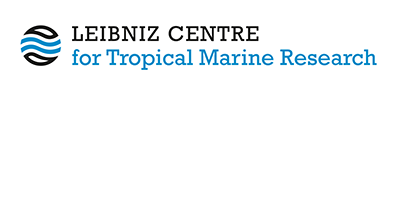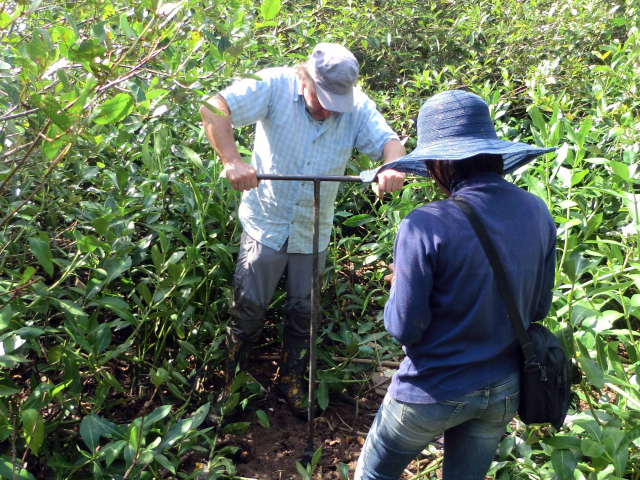New study quantifies carbon fluxes in mangroves
As a result of exponential growth over the past decade, there are now a number of studies looking at how mangroves fix, convert, store and export carbon or CO2. So how well do we understand the carbon cycle in mangroves today?
The publication of an international and interdisciplinary consortium of 17 authors, including biogeochemist Tim Jennerjahn from the ZMT, recently addressed this question. The researchers produced a comprehensive synthesis of the existing literature on carbon cycling in mangroves, reviewing known and newly discovered carbon pathways and providing an overview of the technologies available to measure carbon fluxes in mangroves, their potential and their limitations.
Various aspects of the CO2 cycle were taken into account: the increase in carbon, for example through the accumulation of woody biomass and deadwood, as well as through the production of roots and litter, carbon sequestration in the soil, the transformation of carbon in food webs and also the release of CO2 and CH4 through the export of litterfall, particulate and dissolved carbon. The publication quantifies the global net production and respiration in mangrove forests and compares the primary production of biomass in mangroves with that in terrestrial forests. It also presents updated mangrove carbon budgets and finally identifies knowledge gaps, future research directions and implications for mangrove management.
"Mangrove forests are such efficient carbon sinks because, although they do not have the highest primary production compared to terrestrial forests, they have very low ecosystem respiration," reports Tim Jennerjahn. The net carbon uptake in mangroves of 66.6 Tg C per year is lower than was found in previous syntheses. Essentially, this result of the study was due to the more complete recording of gains and losses and in particular the export of dissolved inorganic carbon. However, methane outgassing proved to be quantitatively insignificant.
"There are still too few studies on the latter aspects," says Jennerjahn. "Although tools such as remote sensing and drones increase spatial coverage and resolution and reduce costs, they still pose challenges because verification in the field is required." Despite methodological progress, there are still problems in quantifying carbon fluxes, as the measurements are taken at very different scales both spatially and temporally. This makes comparisons and balancing difficult. There are also large spatial gaps in the data, particularly in South America, West Africa and regions in the Pacific. Furthermore, very little is known about arid and urban mangrove forests.
In the course of 'Blue Carbon', the number of mangrove restoration projects to generate carbon credits is increasing rapidly. The local data required for this is often not available or only partially available. In many cases, complete accounting for individual projects is not possible anyway due to the lack of information. For this reason, it is important to know the relevant processes, quantify their carbon flows and identify the respective drivers of the flows.
"Our work contributes to this understanding and provides realistic values for the carbon sequestration potential, which can serve as a basis for the management of mangroves when it comes to climate change mitigation and adaptation measures, even in regions for which little data is available," adds Jennerjahn.
Publication
Adame, M.F., Cormier, N., Taillardat, P., Iram, N., Rovai, A., Sloey, T.M., Yando, E.S., Blanco-Libreros, J.F., Arnaud, M., Jennerjahn, T., Lovelock, C.E., Friess, D., Reithmaier, G.M.S., Buelow, C., Muhammad-Nor, S.M., Twilley, R.R., Ribeiro, R.A. (2024). Deconstructing the mangrove carbon cycle: Gains, transformation, and losses. Ecosphere 15(3): e4806. https://doi.org/10.1002/ecs2.4806





